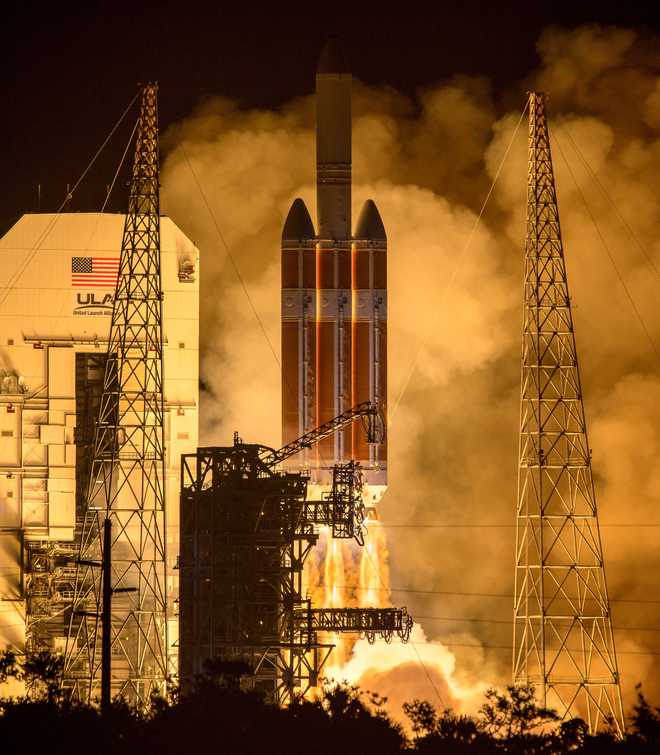NASA launches probe to go deep into Sun''s scorching atmosphere
August 12
NASA launched a space probe early Sunday that will go closer to the Sun than any spacecraft before, the agency announced.
The craft will endure extreme heat while zooming through the solar corona to study the Sun's outer atmosphere that gives rise to the solar winds.
The Parker Solar Probe, a spacecraft the size of a small car, launched from Cape Canaveral in Florida about 3:30 a.m.
Sunday, on a seven-year mission. It is set to fly into the Sun's corona within 3.8 million miles (6.1 million km) of the solar surface, seven times closer than any other spacecraft.
The corona gives rise to the solar wind, a continuous flow of charged particles that permeates the solar system and can cause havoc with communications technology on Earth. NASA hopes the findings will enable scientists to forecast changes in Earth's space environment.
The project, with a $1.5 billion price tag, is the first major mission under NASA's Living With a Star program.
The probe, named after American solar astrophysicist Eugene Newman Parker, will have to survive difficult heat and radiation conditions. It has been outfitted with a heat shield designed to keep its instruments at a tolerable 85 degrees Fahrenheit (29 degrees Celsius) even as the spacecraft faces temperatures reaching nearly 2,500 degrees Fahrenheit (1,370 degrees Celsius) at its closest pass. Reuters
Unlock Exclusive Insights with The Tribune Premium
Take your experience further with Premium access.
Thought-provoking Opinions, Expert Analysis, In-depth Insights and other Member Only Benefits
Already a Member? Sign In Now










